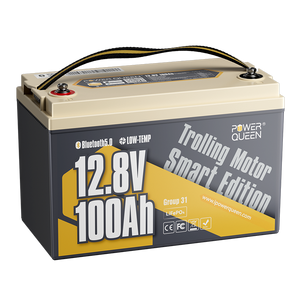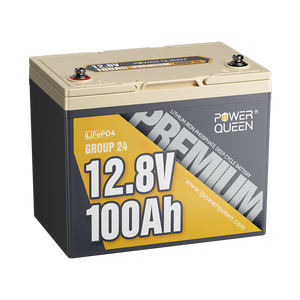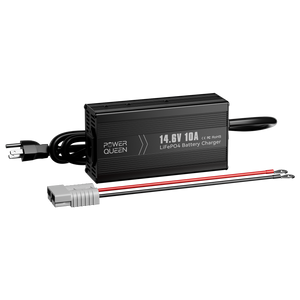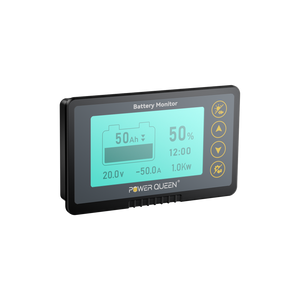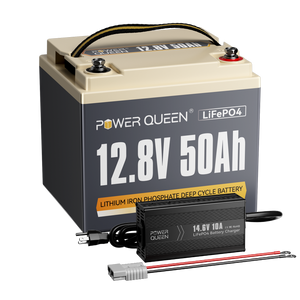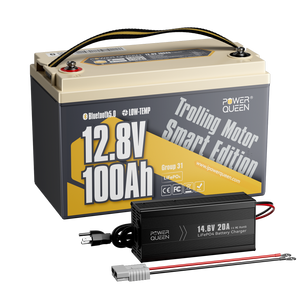How to Choose Kayak Trolling Motor Battery: Lithium vs. Lead-Acid
Choosing the right battery for your kayak trolling motor is crucial for optimal performance on the water. Two main options available in the market are lithium batteries and lead-acid batteries. In this article, we will explore the features and considerations of each type to help you make an informed decision.
What Is A Kayak Trolling Motor?
A kayak trolling motor is an electric motor specifically designed for kayaks to provide propulsion. It is an alternative to traditional paddle propulsion, offering easier and more efficient movement on the water. The trolling motor is mounted on the stern or bow of the kayak and is used to propel the kayak forward or backward. It consists of a motor unit, propeller, controls, and a power source, typically a battery.
The motor unit is usually compact and lightweight to ensure it can be easily mounted on a kayak without adding excessive weight or interfering with the kayak's balance. The propeller is responsible for generating thrust and moving the kayak through the water. The controls allow the kayaker to adjust the speed and direction of the motor. Many trolling motors offer variable speed settings and even integrated GPS navigation systems for added convenience.

The motor unit is usually compact and lightweight to ensure it can be easily mounted on a kayak without adding excessive weight or interfering with the kayak's balance. The propeller is responsible for generating thrust and moving the kayak through the water. The controls allow the kayaker to adjust the speed and direction of the motor. Many trolling motors offer variable speed settings and even integrated GPS navigation systems for added convenience.
Kayak trolling motors are particularly useful for anglers who want to navigate larger bodies of water, cover more distance efficiently, or navigate against currents or wind. They provide a hands-free propulsion option, allowing kayakers to focus on fishing or enjoying the scenery while the motor takes care of the paddling.
Factors To Consider When Choosing Kayak Trolling Motor Battery
When searching for the ideal kayak trolling motor battery, it is crucial to consider certain key factors that greatly influence its quality. Let's explore these essential components:
Weight:
The weight of the battery plays a vital role while you are out on the water. A heavier battery creates more drag on your kayak, causing your motor to work harder to maintain speed and efficiency.
Amp Hour Rating:
The amp-hour (Ah) rating indicates how long a battery can provide power. For instance, a 100 amp-hour battery can deliver 100 amps of power for one hour. However, the actual runtime will depend on the power draw of your motor. Higher speeds and challenging conditions might result in increased power consumption, reducing the battery's effective runtime.
In most cases, a 100Ah battery is sufficient for standard trolling motor setups. However, if you plan on embarking on extended trips, have a heavier kayak, or expect to navigate long distances against strong currents, a battery with a higher amp-hour rating might be necessary to meet the increased power demands.
Size and Portability:
Besides weight, the size and portability of the battery are equally important considerations. You'll want a battery that is easy to move for charging purposes or when transferring between kayaks. If the battery is too large and cumbersome, it might cause balance issues and difficulties while on the water.
Maintenance Requirements:
Battery maintenance can significantly impact its lifespan and your convenience. Some batteries, particularly lead-acid types, require regular maintenance tasks such as topping off electrolytes, corrosion cleaning, rust prevention, and charge monitoring. On the other hand, other batteries offer minimal to no maintenance requirements, making them more user-friendly.
Lifespan:
Purchasing a kayak trolling motor battery is a long-term investment, so considering its lifespan is crucial. Battery longevity varies depending on the type of battery used. While some batteries may last only a year, others can endure up to 10 years or more. It is important to research and choose a battery known for its durability and lifespan to ensure you get the most value for your money.
For instance, our Power Queen Batteries offer a remarkable lifespan, typically providing 4,000 full discharge cycles. Additionally, they come with a 5-year warranty, ensuring reliable performance for an extended period, often lasting the lifetime of the vehicle it powers.
By considering these important factors, you can make an informed decision and select the best kayak trolling motor battery that meets your specific needs, ensuring reliable performance and maximizing your enjoyment on the water.
Types of Kayak Trolling Motor Batteries: Lithium vs. Lead-Acid
Lead acid and lithium batteries are the most popular trolling motor batteries we can find in the market. Let’s have a overview of these 2 kinds of batteries and see why lithium battery is a better choice.
Sealed Lead-Acid Batteries:
Sealed lead-acid batteries have long been the conventional choice for various applications, including vehicles. They are commonly used as starting batteries in cars and can be jump-started when needed. While they offer some advantages, their relevance is diminishing in many applications. Here's a closer look at their pros and cons:
Pros
Lead-acid batteries have been around for decades and remain an affordable option. Replacing a lead-acid trolling battery typically costs less than $200. Although they need replacement every few years, the low upfront cost is appealing. Moreover, sealed lead-acid batteries eliminate the risk of spillage and environmental damage associated with non-sealed versions.
Cons:
The downside of lead-acid batteries is their relatively heavy weight. While it is still possible to use a heavy battery to power a trolling motor, the added weight will cause the kayak to ride lower in the water. Additionally, lead-acid batteries should not be discharged beyond 50% to maintain power efficiency and prevent damage. Discharging them below this threshold reduces their lifespan and depletes the battery more rapidly.
Furthermore, charging lead-acid batteries is a slower process as they require multiple charging cycles, including a float-charge stage that takes longer and consumes more power. It is important to note that only sealed lead-acid batteries should be used for kayak trolling motors to prevent acid spillage and environmental harm.
Lithium Batteries:
Lithium batteries represent the cutting-edge technology in battery types and are gradually replacing lead-acid batteries in various applications. These batteries undergo a cycle from a negative electrode to a positive electrode and back during charging. Their unique charging cycle enables faster charging and consistent power delivery from full to empty.
Pros:
Lithium-ion batteries offer numerous advantages:
Lightweight: Lithium-ion batteries are ideal for kayaks due to their lightweight nature. They offer a more balanced ride with reduced drag. The efficiency of lithium-ion batteries allows their amp-hours to last longer than lead-acid batteries.

Fast Charging: Lithium-ion batteries can be fully charged in just a few hours, providing a significant advantage over lead-acid batteries that require much longer charging times. They also do not require a float-charge stage, ensuring a steadier and quicker charging process.
Deep Discharge: Unlike lead-acid batteries, lithium-ion batteries can be fully discharged without damaging their lifespan. They automatically shut off when reaching 100% discharge, preventing any harm to the battery. While it's important to monitor battery levels to avoid being stranded with a dead battery, there is no need to worry about buying a new battery due to over-discharging.
Steady Power: Lithium-ion batteries exhibit a more constant amp draw as the voltage does not sag as much. This allows for a better estimation of battery life, as the amp draw remains relatively consistent. The power output of the motor remains steady throughout the battery's charge, from full to empty.
Long Lifespan: One of the significant advantages of lithium-ion batteries is their extended lifespan. They can last for a decade or longer, often accompanied by a 5-year warranty. With proper care, it is not uncommon for lithium-ion batteries to exceed 10 years of use.
Cost Savings: Although the upfront cost of lithium-ion batteries is higher compared to lead-acid batteries, their long lifespan allows for significant cost savings over time. Instead of purchasing three or four lead-acid batteries within a similar timeframe, a single lithium-ion battery can last for at least 10 years, saving money, time, and hassle.
Cons:
The main drawback of lithium-ion batteries is their higher initial cost. They typically cost several hundred dollars, while the traditional lead-acid option remains below $200. However, Power Queen provides cost-effective lithium batteries, making the upgrade easily.
Considering lithium batteries’ longevity and the savings associated with not having to replace batteries frequently, the higher upfront cost is offset over the battery's lifespan.
What Is the Best Kayak Trolling Motor Battery?
By choosing a lithium battery for your kayak trolling motor, you'll experience a more balanced ride with reduced drag. The consistent power delivery throughout the battery's charge ensures reliable performance from full to empty, without a significant drop-off in power. Furthermore, lithium batteries offer the convenience of deep discharge capability, allowing you to utilize the battery's full capacity without damaging its lifespan. You won't have to worry about closely monitoring battery levels or prematurely replacing the battery due to over-discharging.
The Power Queen 12.8V 100Ah Low-Temp LiFePO4 Battery is an excellent option for a trolling motor. It is specifically designed to withstand the challenges of marine environments, making it a reliable choice for kayak enthusiasts.


With its moisture-proof, dust-proof, and salt-spray-resistant construction, this battery provides exceptional protection against the elements. Whether you're navigating freshwater lakes or facing the harsh conditions of saltwater environments, you can trust that this battery will deliver consistent and unwavering performance.

How Long Will a 100Ah Lithium Battery Run a Kayak Trolling Motor?
The runtime of a 100Ah lithium battery powering a kayak trolling motor will depend on several factors, including the motor's power consumption and the speed at which it is operated. To get an estimate of the runtime, you'll need to calculate the amp draw of your trolling motor and divide the battery's capacity by that draw.
Let's assume your trolling motor draws 25 amps at its maximum speed. In this scenario, dividing the battery's capacity by the draw will give us an estimation:
100Ah / 25A = 4 hours
Therefore, using a 100Ah lithium battery with a trolling motor that draws 25 amps at the maximum speed, you can expect approximately 4 hours of runtime. It's important to note that this is just an estimate, and the actual runtime may vary depending on factors such as environmental conditions and motor usage patterns.
Frequently Asked Questions about Trolling Motor Batteries
1.Can I use a lead-acid starter battery with lithium trolling motor batteries?
Yes, you can use a lead-acid battery as a starter battery while using lithium batteries for your trolling motor. The two types of batteries can coexist in your setup without any issues.
2.Should I charge my batteries after each use?
While lithium batteries are less susceptible to damage when left partially discharged for extended periods compared to lead-acid batteries, it is still recommended to charge them after each use.
Charging your lithium batteries regularly helps optimize their capacity and ensures they are fully ready to provide maximum runtime whenever you go out on the water. Regular charging can help maintain their performance and reliability for your next boating adventure.
Conclusion
Selecting the right battery for your kayak trolling motor is essential to ensure optimal performance and a satisfying boating experience. Understanding the differences between lithium and lead-acid batteries, as well as considering factors such as weight, capacity, voltage requirements, size, and maintenance needs, will enable you to make an educated decision. By choosing the battery that aligns with your specific needs, you can enjoy long-lasting power on the water and make the most of your kayak adventures.




